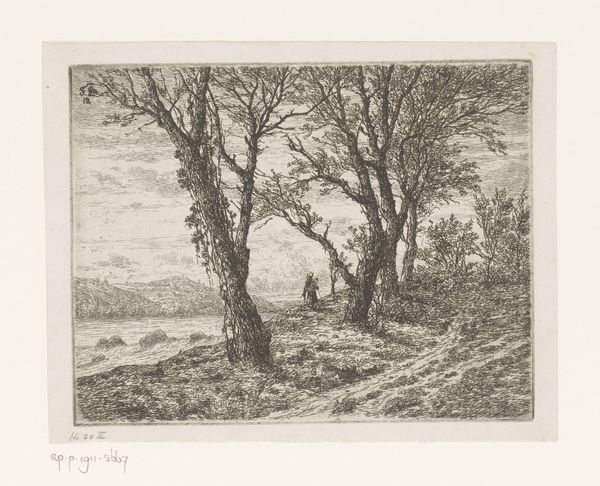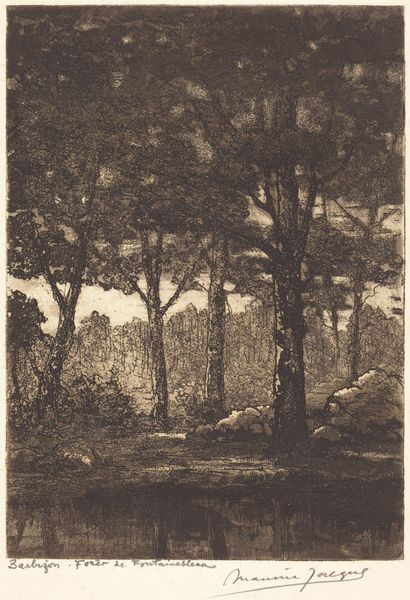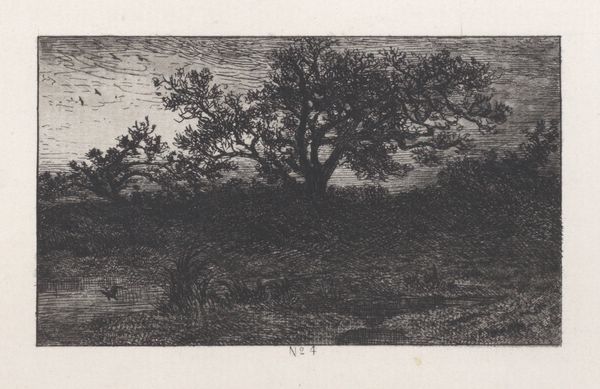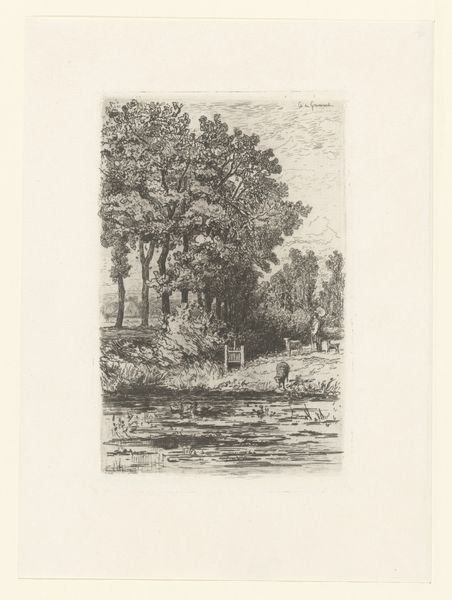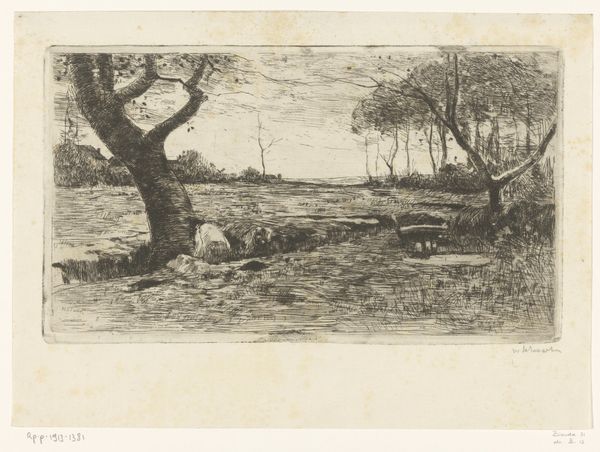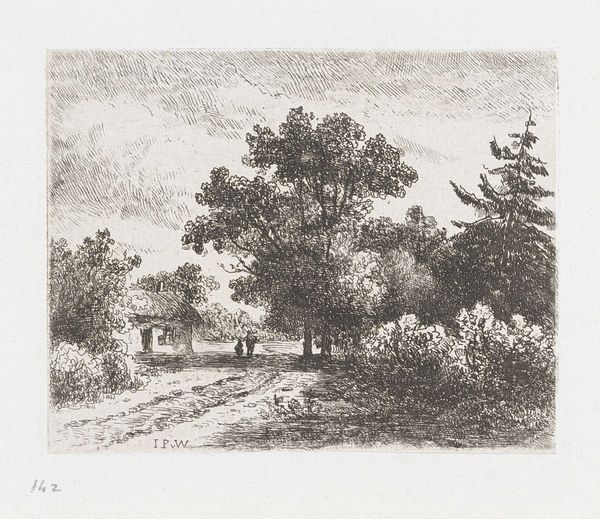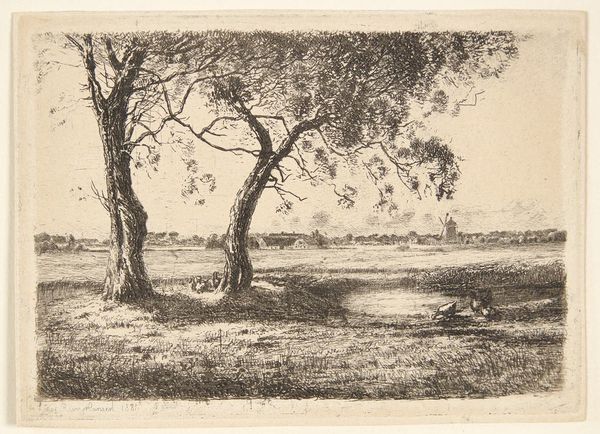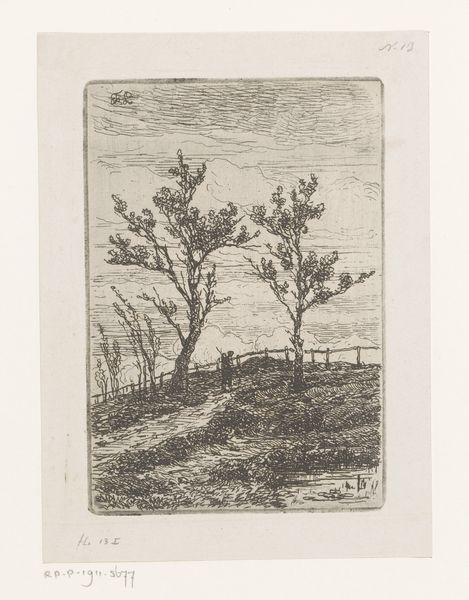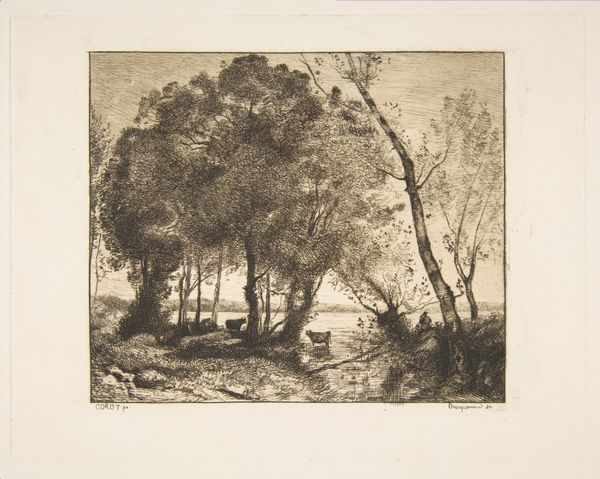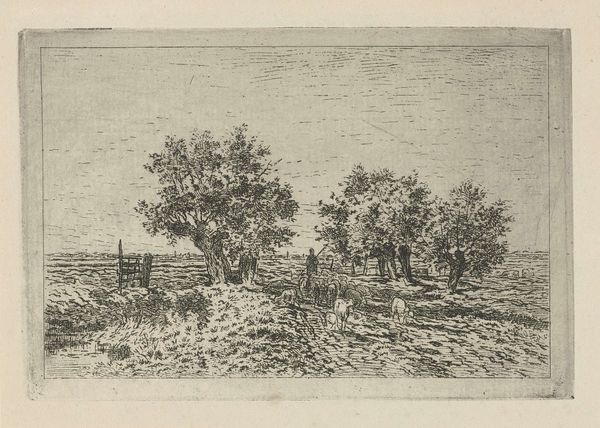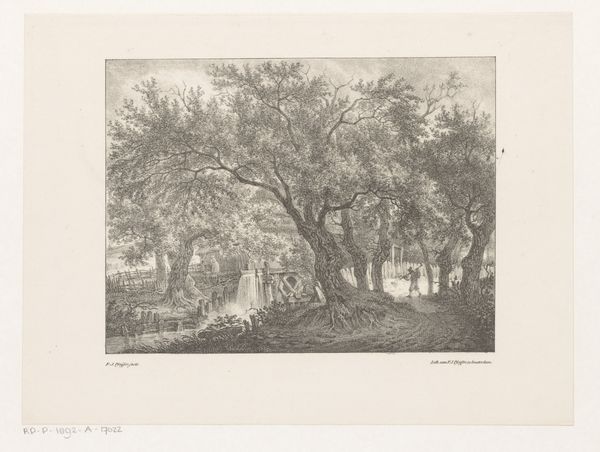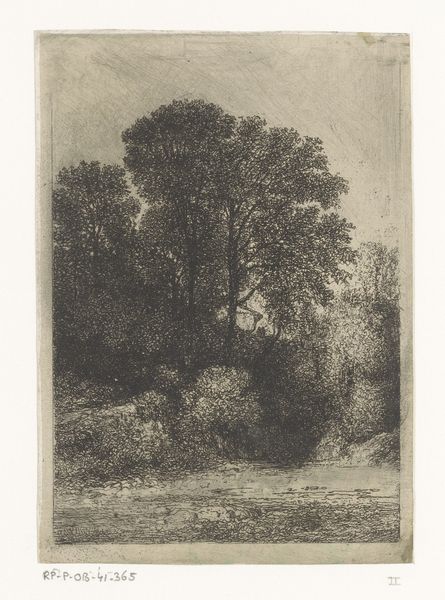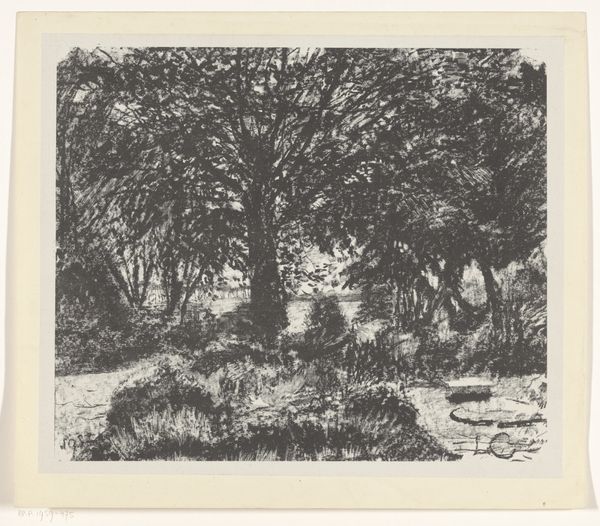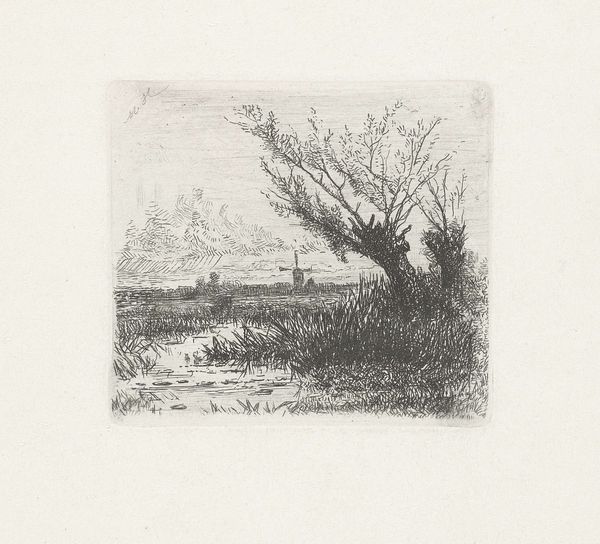
print, etching
# print
#
etching
#
landscape
#
realism
#
monochrome
Dimensions: height 135 mm, width 116 mm
Copyright: Rijks Museum: Open Domain
Willem Roelofs created this etching, "Ducks by a Ditch," using a metal plate, acid, and printing press. The magic of etching lies in its indirectness. The artist protects the metal plate with a waxy coating, draws through it to expose the metal, and then bathes the plate in acid, which bites into the lines. Ink is then forced into these etched lines, and the plate is pressed onto paper. This creates the image we see, a mirror of the original drawing. Look closely, and you can see the delicate network of lines that define the ducks, trees, and water. But why choose etching? Unlike a painting, an etching can be reproduced, making art more accessible. This aligns with the broader social changes of the 19th century, where art began to reach a wider audience beyond the wealthy elite. Roelofs wasn't just depicting a scene; he was participating in a shift in how art was made, distributed, and consumed. This demonstrates the importance of considering materials, production, and context to understand the true meaning of a piece.
Comments
No comments
Be the first to comment and join the conversation on the ultimate creative platform.
